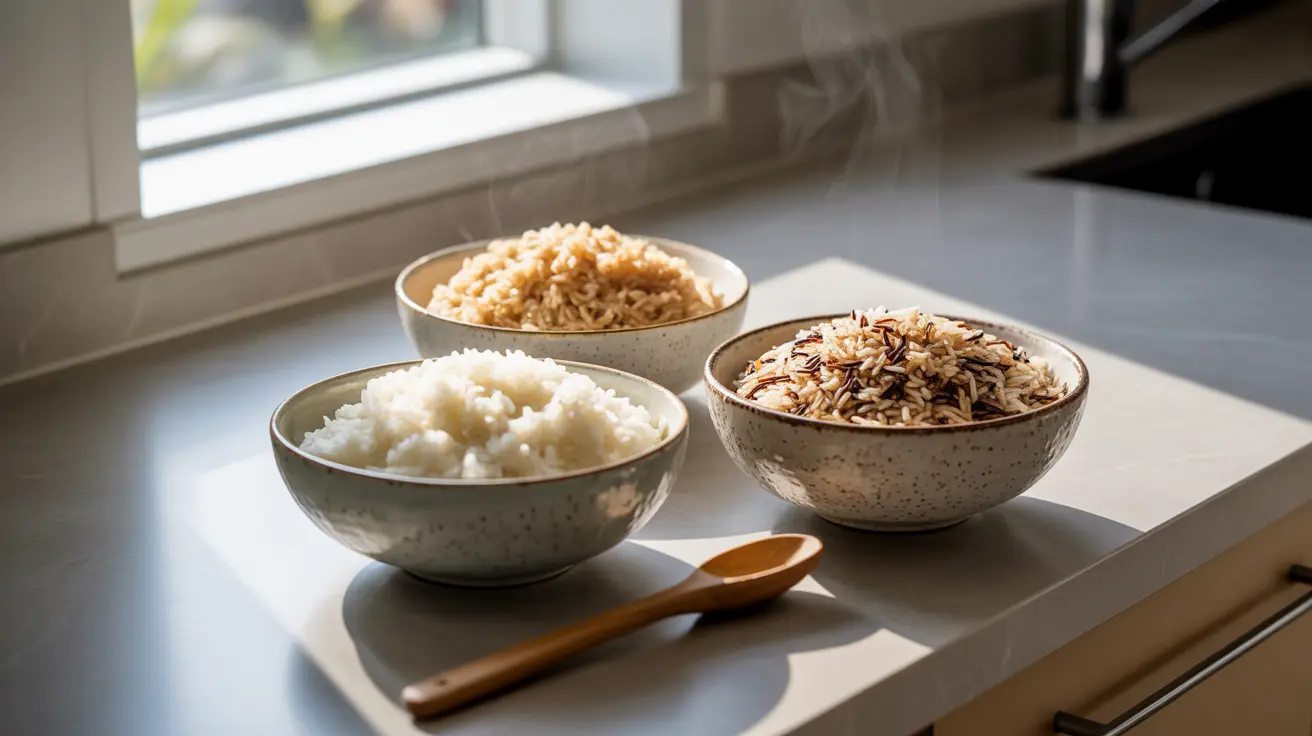Rice is a dietary staple for billions of people worldwide, but many wonder about its carbohydrate content and how it fits into a healthy diet. Understanding the carbohydrate composition of different rice varieties and their effects on blood sugar can help you make informed dietary choices.
In this comprehensive guide, we'll explore the carbohydrate content of various rice types, their impact on blood sugar, and strategies for healthier rice consumption.
Carbohydrate Content in Different Rice Types
Rice is indeed considered a high-carbohydrate food, with most varieties containing significant amounts of complex carbohydrates. A typical one-cup serving of cooked rice contains:
- White rice: 45 grams of carbohydrates
- Brown rice: 45 grams of carbohydrates
- Wild rice: 35 grams of carbohydrates
While the total carbohydrate content might be similar between some varieties, the nutritional composition and health effects can vary significantly.
Understanding Glycemic Impact
Different types of rice can affect blood sugar levels in varying ways, primarily due to their fiber content and processing methods:
White Rice
White rice undergoes extensive processing that removes the bran and germ layers, resulting in:
- Higher glycemic index
- Faster digestion
- More rapid blood sugar elevation
- Lower fiber content
Brown Rice
Brown rice retains its bran and germ layers, offering:
- Lower glycemic index
- Slower digestion
- More gradual blood sugar impact
- Higher fiber content
- Additional nutrients
Wild Rice
Wild rice, technically a grass seed, provides:
- Lowest glycemic impact among rice varieties
- Highest protein content
- Substantial fiber content
- More balanced blood sugar response
Smart Rice Preparation Methods
Several cooking techniques can help reduce the glycemic impact of rice:
- Cooling after cooking (creates resistant starch)
- Adding healthy fats during preparation
- Pairing with fiber-rich vegetables
- Controlling portion sizes
- Rinsing before cooking
Frequently Asked Questions
- Is rice considered high in carbohydrates compared to other staple foods?
Yes, rice is considered a high-carbohydrate food. Compared to other staples, rice contains similar carbohydrate levels to pasta but more than quinoa or sweet potatoes. A cup of cooked rice typically contains 35-45 grams of carbohydrates.
- What are the differences in carbohydrate content between white, brown, and wild rice?
While white and brown rice contain similar total carbohydrates (about 45g per cup), brown rice has more fiber and nutrients. Wild rice has slightly fewer carbohydrates (about 35g per cup) and more protein than both white and brown rice.
- How does rice type affect blood sugar levels and glycemic index?
White rice has a higher glycemic index and causes faster blood sugar spikes. Brown and wild rice have lower glycemic indices due to their fiber content, resulting in more gradual blood sugar increases.
- Can eating brown rice instead of white rice help with managing diabetes or blood sugar?
Yes, brown rice can be better for blood sugar management because its fiber content slows digestion and glucose absorption. This results in more stable blood sugar levels compared to white rice.
- What cooking or preparation methods can lower the glycemic impact of rice?
Several methods can reduce rice's glycemic impact: cooling after cooking (then reheating if desired), adding healthy fats during cooking, pairing with fiber-rich foods, and controlling portion sizes. These techniques can help create more resistant starch and slow digestion.




